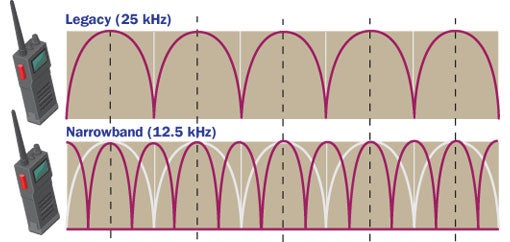Deadline nears for two-way radio narrowbanding rule
Health care facility managers are reminded that time is running out to comply with the Federal Communications Commission (FCC) requirement that starting Jan. 1, 2013, anyone using two-way radios must cease operating 25 kilohertz (kHz) efficiency technology and instead use 12.5 kHz narrowband units.
More specifically, all existing Part 90 radio systems operating in the 150-174 megahertz (MHz) and 421-512 MHz bands have until Jan. 1 to convert those systems either to a maximum bandwidth of 12.5 kHz or to a technology that provides at least one voice path per 12.5 kHz of bandwidth or equivalent efficiency, states the FCC. Some units can be reprogrammed to comply with the rule, but older units typically will need to be replaced.
"Basically, the mobile units now used in hospitals in those frequency bands will not have licenses after Jan. 1, 2013, unless they have changed to the narrower spectrum," says John T. Collins, FASHE, director of engineering and compliance, American Society for Healthcare Engineering. "The FCC is not going to extend the deadline."

After the Jan. 1 deadline, licensees not operating at 12.5 kHz efficiency will be in violation of FCC rules and could be subject to enforcement action, which may include admonishment, monetary fines or loss of license, according to the FCC.
Narrowbanding is an effort to ensure more efficient use of the VHF and UHF spectrum by requiring all VHF and UHF public safety and industrial/business land mobile radio systems to migrate to at least 12.5 kHz efficiency technology by the deadline, says the FCC.
The FCC began almost two decades ago to ensure more efficient use of the spectrum and greater spectrum access for public safety and nonpublic safety users. Migration to 12.5 kHz efficiency technology (once referred to as refarming, but now called narrowbanding) will allow the creation of additional channel capacity within the same radio spectrum and support more users.
For more detailed information and resources, go to www.fcc.gov/narrowbanding.




